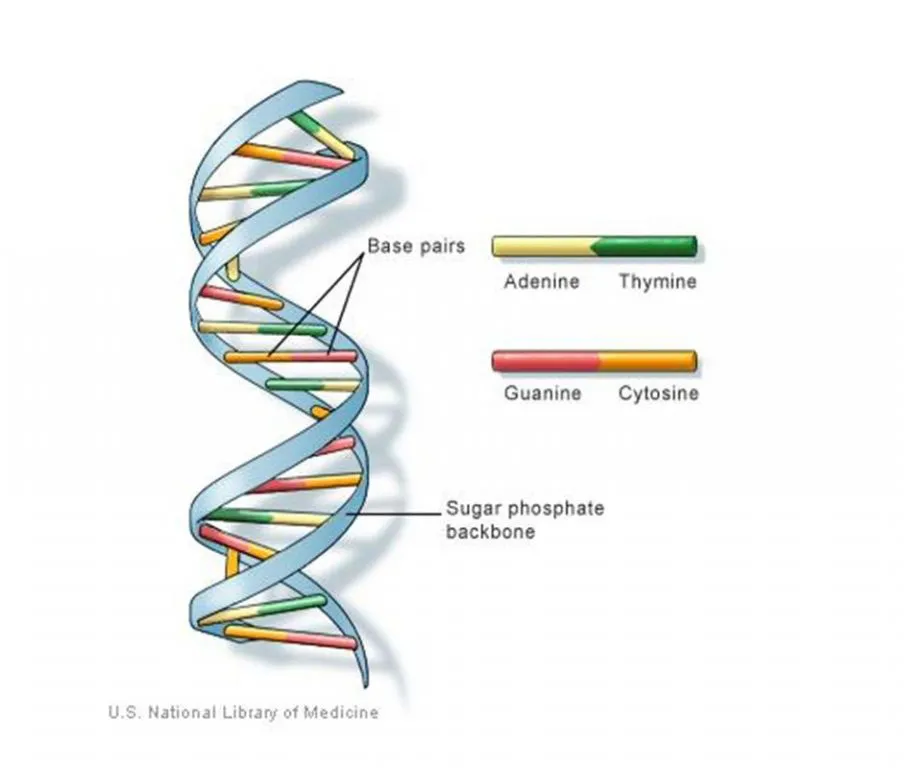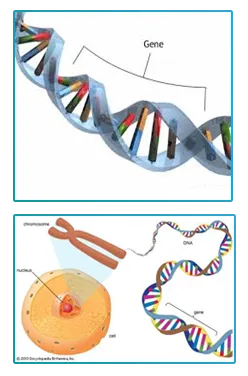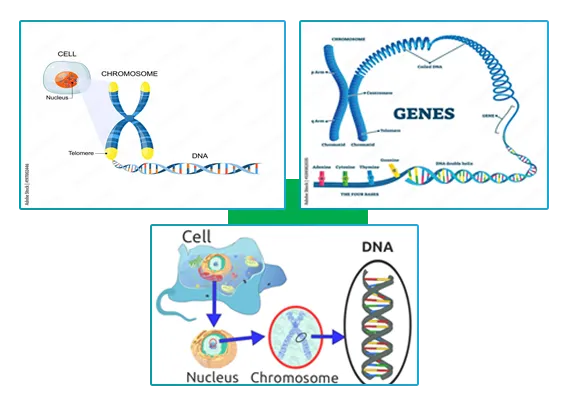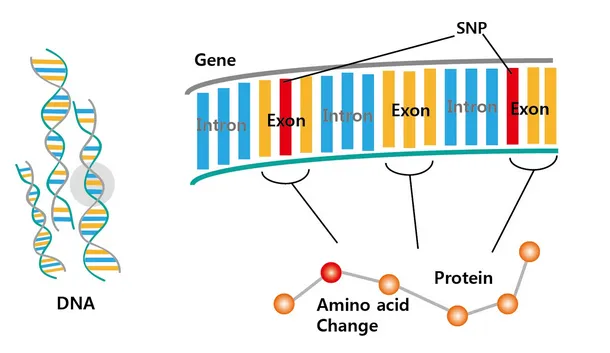It's good to know
where you come from.
It makes you what you are today. It's DNA, it's
in your blood.
-
Alexander McQueen
DNA stands for deoxyribonucleic acid, sometimes called "the molecule of life," as almost all organisms have their genetic material in the form of DNA. DNA is an amazing chemical present in every cell. It contains all the information cells need to make a fish a fish, or you uniquely YOU. All humans start out as a single cell and grow into 37.2 trillion cells in human body. DNA tells the single cell to divide into two cells, then four, then eight and so on until a whole body forms. It controls the growth of EVERYTHING, from your head to your toes. DNA is self-replicating, plays a central role in protein synthesis. DNA is made of two linked strands that wind around each other to resemble a twisted ladder that shape known as a double helix. Each strand has a backbone made of alternating sugar (deoxyribose) and phosphate groups. Attached to each sugar is one of four bases: adenine (A), cytosine (C), guanine (G) or thymine (T). The two strands are connected by chemical bonds between the bases: adenine bonds with thymine, and cytosine bonds with guanine.

Genes are like the story
and DNA is the language
that the story is written in
-- Sam kin
The genes are short sections of DNA and are arranged, one after another, at specific locations on chromosomes that present in the nucleus of cells. Gene encodes the synthesis of a gene product, either RNA or protein. Genes are made up of sequences of DNA. They contain information for making specific proteins that lead to the expression of a particular physical characteristic or trait, such as hair colour or eye colour, or to a particular function in a cell. According to the Human Genome Project, humans are estimated to have between 20,000 to 25,000 genes. Moreover, humans inherit two copies of each gene, one from each parent. However, a small number of genes marginally vary between individuals. These marginal differences are responsible for the unique characteristics of each individual.

A chromosome is made up
of proteins and DNA organized into genes.
Each cell normally contains 23
pairs of chromosomes.
Chromosomes are tiny structures inside cells made from DNA and protein. The information inside chromosomes acts like a blueprint that tells cells how to function and replicate. Every form of life has its own unique set of instructions, including you. Your chromosomes help describe unique features you will develop like eye colour and height.
Humans have 23 different pairs of chromosomes for a total of 46 chromosomes. We all get 23 chromosomes from our mother and 23 from our father. Scientists number these pairs from 1 to 22 and then an extra pair called the "X/Y" pair. The X/Y pair determines if you are a male or a female. Females have two X chromosomes called the XX, while males have an X and a Y chromosome called the XY.

The genome is the total genetic information of an organism. It is encoded either in DNA for most of the organism or for RNA viruses in the form of RNA. The genome includes both the genes the coding and the non-coding sequences of the DNA or RNA.Genomic DNA molecules are generally large, and in most organisms are organized into DNA–protein complexes called chromosomes. Gene basically refers to the unit of DNA that carries the instructions for making a specific protein or set of proteins these genes Located on 23 pairs of chromosomes packed into the nucleus of a human cell. Proteins make up body structures like organs and tissue, as well as control chemical reactions and carry signals between cells. If a cell's DNA is mutated, an abnormal protein may be produced, which can disrupt the body's normal processes and lead to a disease such as cancer.
Viral DNA genomes are relatively small and can be single- or double-stranded, linear, or circular. Bacteria have a single, circular chromosome. The study and analysis of genomes is called genomics.

Whole Exome
Whole-exome sequencing is a widely used
next-generation sequencing (NGS) method that involves sequencing the
protein-coding regions of the genome. The human exome represents less than
2% of the genome, but contains ~85% of known disease-related variants, 1
making this method a cost-effective alternative to whole-genome sequencing
Exome sequencing using exome enrichment can efficiently identify coding
variants across a broad range of applications, including population
genetics, genetic disease, and cancer studies.
Clinical exome
Clinical Exome Sequencing is a test for identifying
disease-causing DNA variants within the 1% of the genome which codes for
proteins (exons) or flanks the regions which code for proteins (splice
junctions). This test is intended for use in conjunction with the clinical
presentation and other markers of disease progression for the management of
patients with rare genetic disorders. Even though there are over 2,000
Mendelian diseases caused by known DNA variants, many patients who are
suspected or have been clinically demonstrated to have rare genetic
disorders do not receive a molecular diagnosis, often due to genetic
heterogeneity and the relative inefficiency of the current sequencing
technology. It is widely accepted that about 85% of known disease-causing
variants occur within the 1% of the genome containing the exons and splice
junctions ; thus, surveying just this portion of the genome is an efficient
and powerful clinical diagnostic tool for individual patients.

